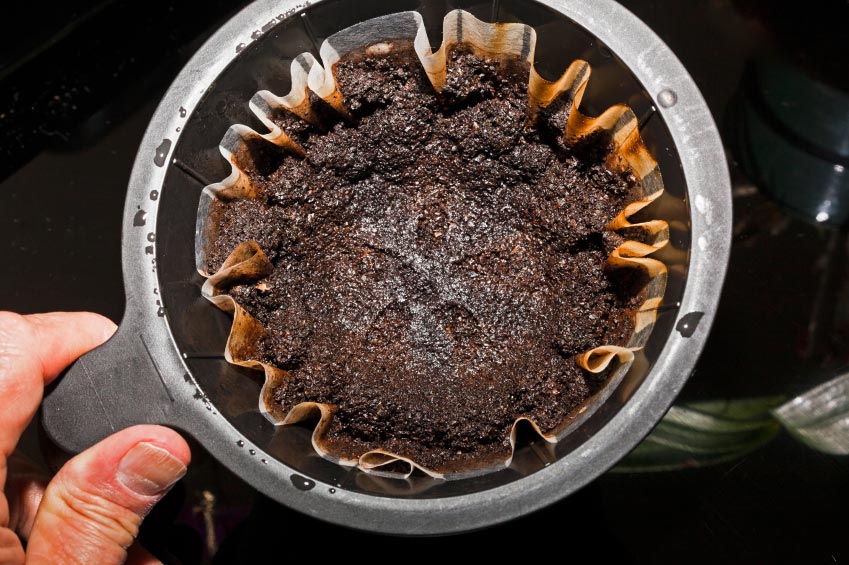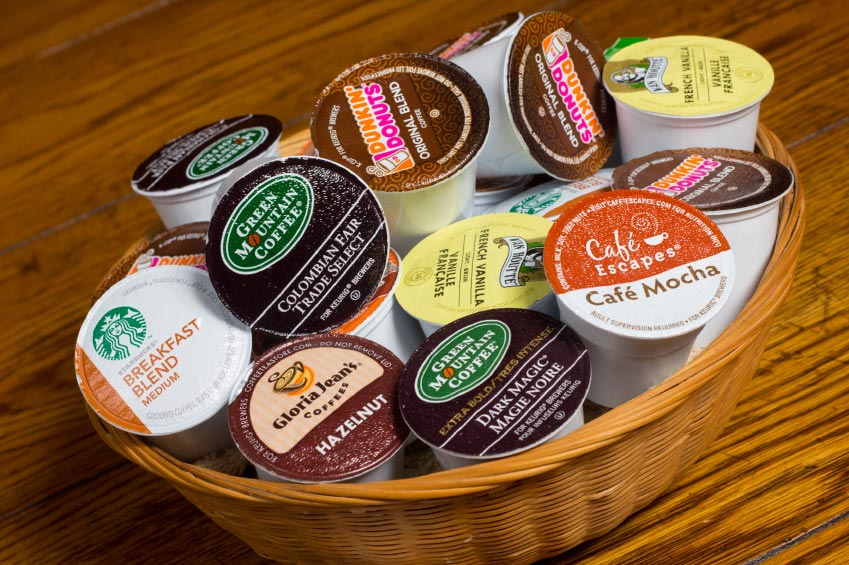
Who doesn’t feel instantly energized by the smell of freshly brewed coffee in the morning? Sometimes we just need that little pick-me-up before getting the kids out of bed, or facing into an early morning meeting.
Since we’re all strapped for time, and live in a culture of convenience, it’s no surprise that so many of us rely on our single-cup coffee brewing machines for our caffeine hit. In fact, the National Coffee Association of the USA found that, in 2015, 27% of Americans use a single-cup brewing system, up from a mere 7% just four years ago!
However, this rising trend may be a cause for concern – particularly if you take into account the environmental impact of all these coffee pods, along with the health concerns surrounding the cleanliness of the machines and use of plastics in the pods.
Let’s take a look at some of the main concerns surrounding these machines.
Environmental Impact
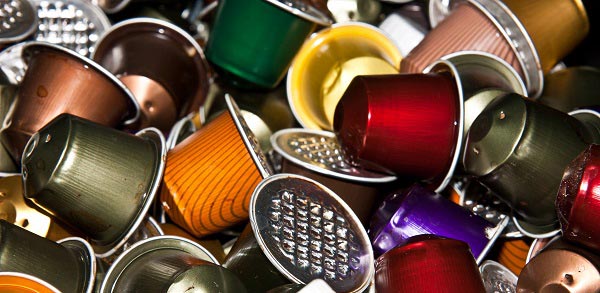
In general, these plastic and metal capsules aren’t recyclable, or at the very least require additional processing to separate the components before recycling.
Some of the biggest companies – like Nespresso, Keurig and Nescafe’s Dolce Gusto (which lead the way in Europe) – don’t offer easily recyclable pods.
Keurig has long been criticized for the difficulty in recycling its coffee pods, known as K-Cups. In 2011, they were condemned by Clean Water Action, prompting the American manufacturer to pledge that all K-Cups would be recyclable by 2020. Similarly, Nescafe state they are ‘exploring a number of possible options’ for recycling their pods, but have given no definite date for when this will happen.
While Nespresso will collect its pods for recycling, you’ll need to order more from their website first. Otherwise, you can bring your used pods to a dedicated recycling point. These are limited in number though, so there may not be one nearby and it’s still not exactly the definition of ‘convenience’ – the very concept these brands built their empires on.
So What Makes these Pods so Difficult to Recycle?
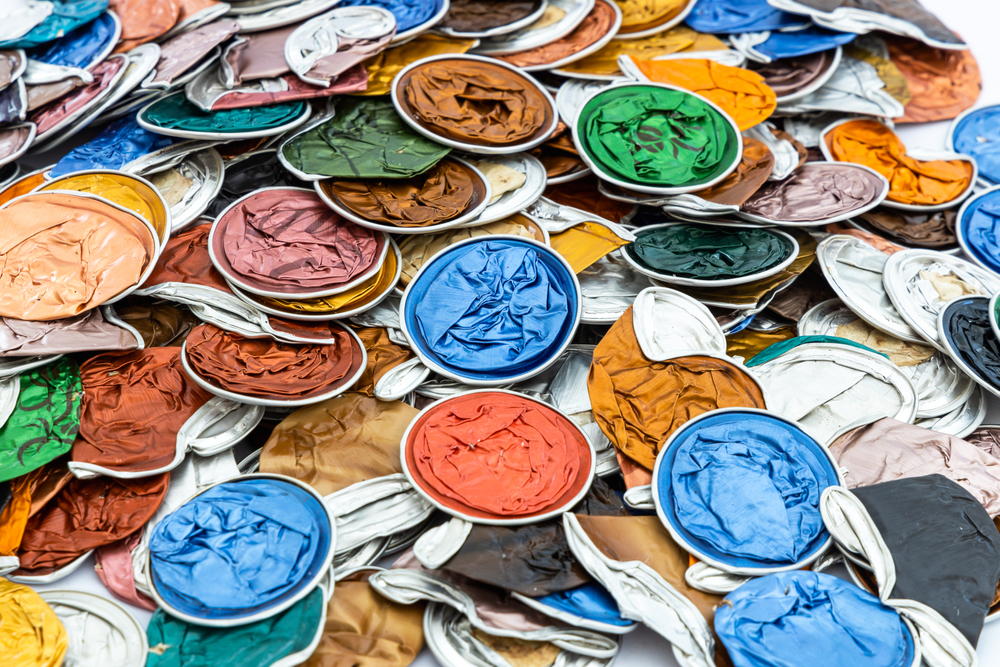
Made from items like plastic, aluminum, organic material (coffee grounds) and paper filters, these pods are technically recyclable. However, some pods will need to be separated first.
Given that most people purchase one of these machines to save time, it’s unlikely many will sit down to pry apart the pods and separate the components. So these used plastic containers are thrown in the bin whole, making them non-recyclable. (It also means we don’t get to keep the coffee grounds, and so miss out on these Genius Ways to use them!)
Even those environmentally conscious folk out there who do set aside time to separate their used pods may be doing so in vain. Experts say it’s virtually impossible to recycle the components as they are so small that they often fall through the cracks of most recycling facilities.
Of course, because the plastics in the pods are chosen specifically because of their ability to remain stable and durable as 192 degree hot water passes through them, they don’t break down easily in landfills.
With billions of K-cups dumped each year, we could soon be sitting on mountains of them. Think that’s an exaggeration? In 2013, enough K-Cups were sold that, if placed end-to-end, they would circle the Earth 10.5 times.
And what about the numbers of aluminum Nespresso pods sold? The company don’t release statistics on how many pods are recycled but it seems likely that a lot end up in a landfill.
With almost 20 single-cup coffee system manufacturers in operation, and countless other companies selling pods to fit these machines, the true amount of this type of waste ending up in our landfills probably can’t be quantified.
Even the creator of the coffee pod wishes he’d never invented it, because of their massively negative environmental impact!
Health Concerns
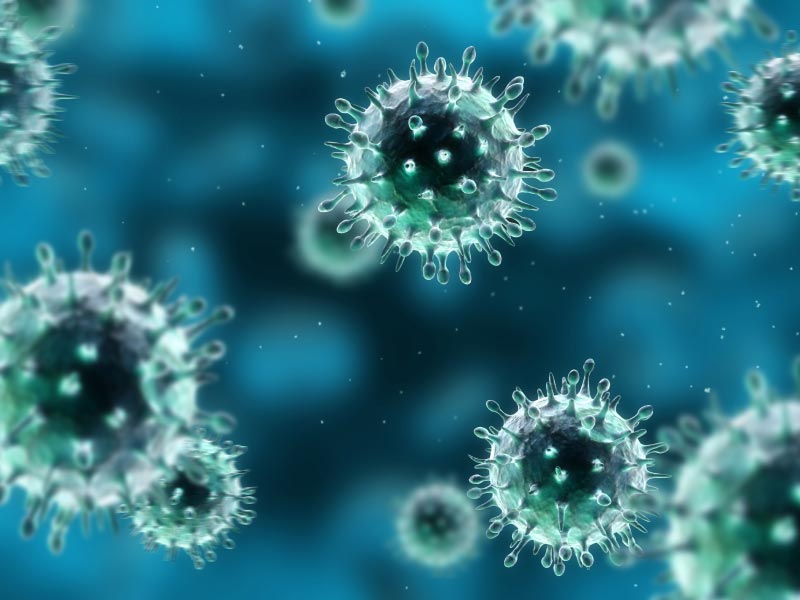
From concerns about hormones to bacteria, the single-serve coffee maker has come under scrutiny again and again in the online realm.
How Clean is Your Machine?
According to a swab test conducted of 28 coffee machines recently by a Pittsburg station, over 4 million colonies of harmful bacteria and mold was found in the water tanks, pod compartment, spout and tray of more than half of the machines. Strains of bacteria like E.coli, staphylococcus, streptococcus and pseudomonas aeruginosa were found.
NSF International, the public health and safety organization, conducted a study to find the ‘germiest room in the home’. It was, of course, the kitchen, with the coffee maker reservoir showing higher germ counts than bathroom sinks and even your Labrador’s slobbery chew toy!
Because coffee makers are such moist environments they easily harbor mold and bacteria. If these levels get high enough, they can cause illness, according to Kelly Reynolds, a microbiology specialist at the University of Arizona.
What About the Pods?
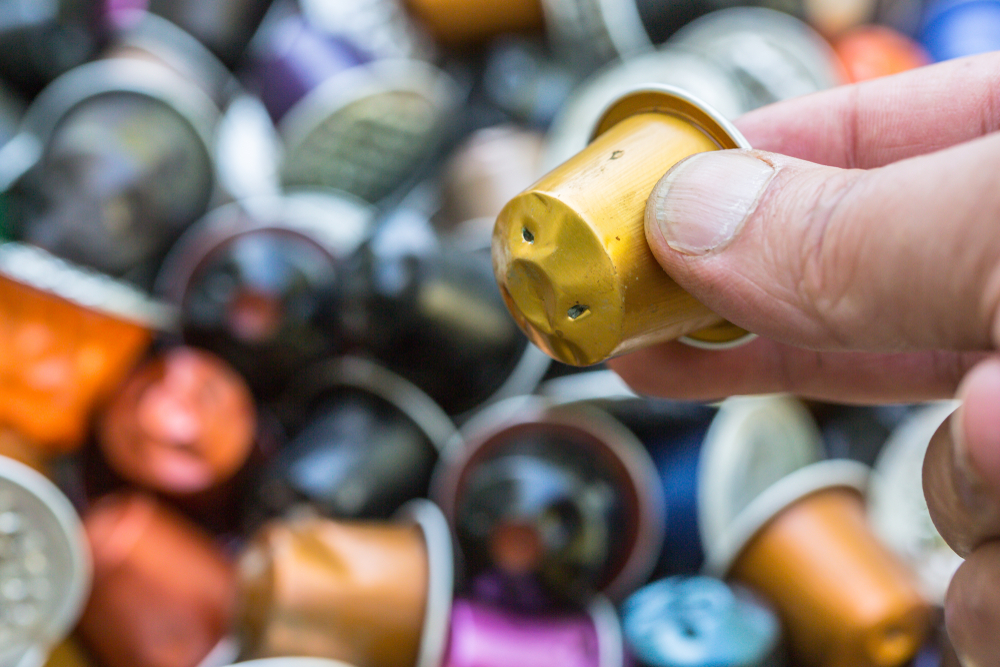
Most of these pods are made of plastic and whether or not this should this be a cause for concern is uncertain.
Plastic seems to be in every phase of food production and preparation. While there is a lot of debate going on about the safety of plastic near our food, many experts including the FDA, state the plastics approved for use with food are perfectly safe.
The main fear right now seems to revolve around a type of plastic called BPA, which lines a lot of tinned food products and is believed to disrupt the functions of hormones, most notably estrogen.
Worryingly, up until 2010 the FDA claimed BPA was perfectly safe. They then revised their stance, stating they had ‘some concerns’ about possible effects of BPA on the brain, behavior, and prostate glands in fetuses, infants, and young children!
Now that these concerns have been raised about BPA, it does bring up questions about the safety of plastics in general and what we may discover about them in the future.
Nonetheless, Keurig do state their pods are BPA free, and are instead made from a plastic referred to as #7 – meaning it’s a mix of plastics. This mix is what makes it so great for preserving the coffee within the pods. However, since we don’t know exactly what kinds of plastic make up these pods, we can’t search for any potential side effects.
A 2011 study, published in the Journal of Environmental Health Perspectives, showed that most plastic products trigger an estrogen effect. Of the 455 common products tested (even those that were marked BPA free) 70% tested positive for estrogenic activity. Worryingly, when subjected to conditions like microwaving and dishwashing, that number jumped to 95%.
So should we worry about passing almost boiling water through plastic pods, and mixing it with acidic coffee grounds? What kind of chemicals will we be exposing ourselves to? And what effect will this have on our bodies and brains?
If these plastic pods have you worried, what about Nespresso’s capsules? Made from aluminum with a food grade shellac coating, they are completely free of plastic. While aluminum itself is linked to certain health concerns, the manufacturer states that the water and coffee comes into contact only with the shellac and not the aluminum. That said, the water does come into contact with plastic within the machine itself – bringing up all the same issues outlined above.
Until more in-depth studies are done on the safety of plastics and food, we’re left with more questions than answers. Until then, it’s always better to be safe than sorry and limit your exposure.
What About the Coffee Grounds?
Nutritional Content
Coffee is a low calorie drink, and can have several health benefits when enjoyed in moderation. The good news for the calorie conscious is that standard espresso pods have the same nutritional value as regular filtered coffee.
However, specialty coffee pods, such as Cappuccinos or lattes, do not. A Cappuccino pod can have around 80 calories, including 5 grams of fat and 5 grams of the dreaded sugar. Flavored pods also contain a lot of additives like Partially Hydrogenated Vegetable Oil, Sodium Caseinate, Dipotassium Phosphate, Silicon Dioxide, artificial colors and flavorings and lots more.
That’s a far cry from the two natural ingredients – coffee beans and water – that are meant to make up your morning brew!
Pesticides
Aside from the concern over chemicals from the plastic leaching into your coffee, what about the pesticides used on the coffee beans? The coffee used in these pods is generally not organic and is therefore liberally sprayed with insecticides (although Keurig have just launched a new organic pod to cater to demand). Conventional coffee farmers apply up to 250 pounds of chemical fertilizers per acre and, as coffee is an imported good, the US do not have control over the type and quantity of pesticides used.
Pesticides are linked to health issues like cancer, Parkinson’s disease and miscarriages in pregnant women. Not something you want to be putting into your body first thing in the morning…or any time of the day for that matter!
Cost
The New York Times did a comprehensive study of single serve coffee brewers and their effect on your bank balance. They worked out that the coffee in both Nespresso pods and K-Cups costs over $50 per pound, much higher than most organic and Fair-Trade coffees. Do you really want to pay that much extra for convenience?
I Can’t Give Up Coffee! What Are My Options?
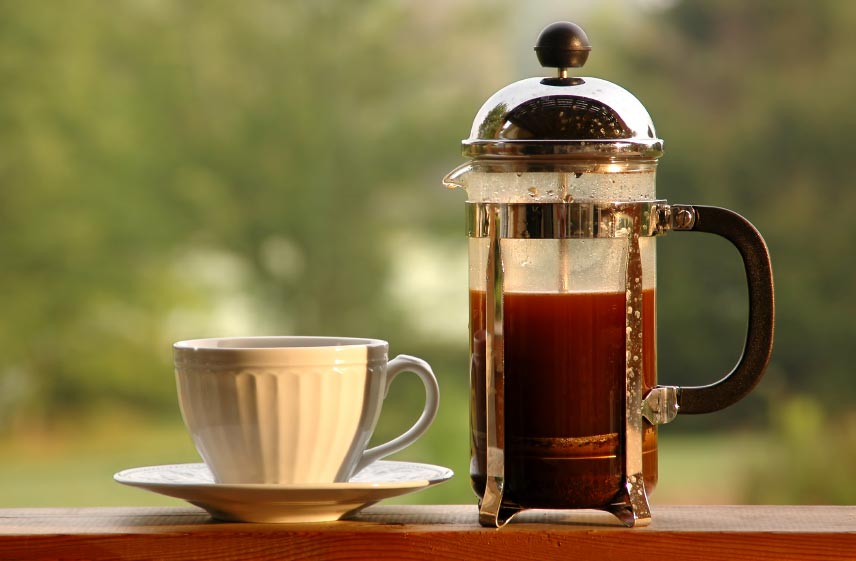
We’d never ask you to do that! The good news is there are plenty of alternatives to sipping on an environmentally unfriendly, potentially germ-filled espresso.
If you really want to hang on to your single-cup coffee machine, then you can make a number of changes to offset some of the concern surrounding the product.
- Firstly, clean your machine. Regularly empty the reservoir, run a vinegar solution through the machine, change the water after each use, leave the lid off to allow it to air dry and wipe it down daily.
- If it hasn’t been used for several days, remove any internal standing water by running a few cleansing brews before use.
- Invest in a reusable pod with a stainless steel mesh to cut down on the environmental impact. These do however, need to be filled before, and cleaned after, each use. You can purchase reusable coffee pods from here.
All this maintenance seems to take the convenience out of this machine though, doesn’t it? Think about trying one of these less expensive, tried and trusted coffee making methods instead.
A French Press / Cafetiere
One of the most popular ways of making coffee, the French Press brews a great cup. You can brew your desired strength and it’s fairly easy to clean. Usually made with glass and stainless steel, you won’t have to worry about nasty chemical-leaching plastics.
Try this gorgeous SterlingPro Coffee & Espresso Maker which can make up to eight cups of coffee at once. Or, if you like to enjoy your coffee alone, try this much smaller French Press.
The Chemex
This gorgeous glass carafe and brewing vessel (available from this page on Amazon) looks great and is durable to boot. It also makes a great cup of coffee because, as you pour hot water over the grounds, you can never over-brew. As the coffee grounds never even touch the glass, it’s simple to clean.
The Aeropress
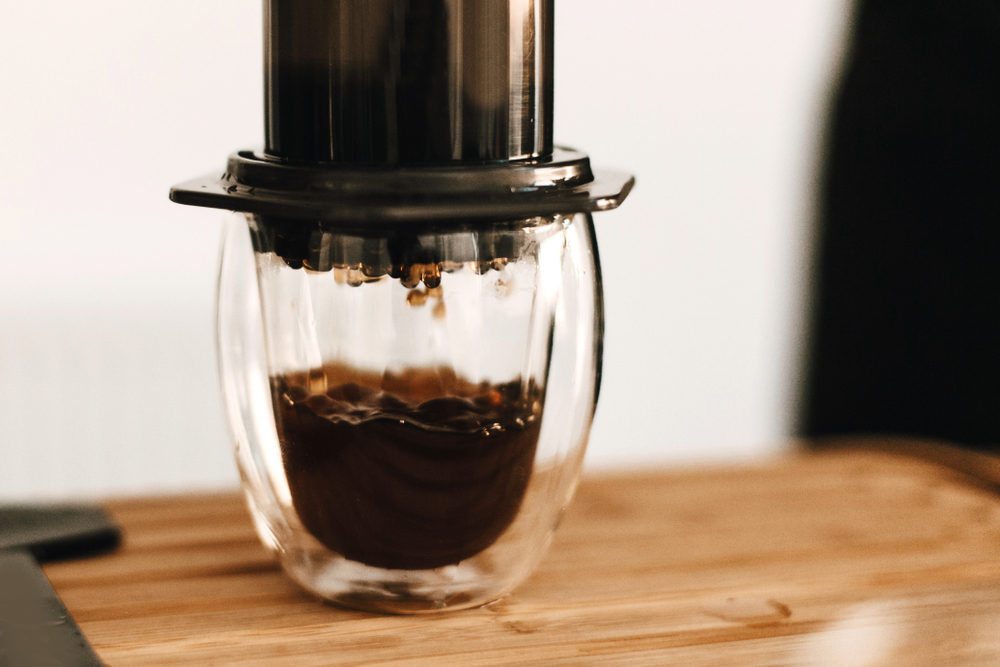
This clever device uses air pressure to extract the brew from the beans, leaving behind the bitter oils. It makes a really flavorsome cup and can be quickly and easily cleaned.
No matter what coffee system you use, always make sure it is regularly and thoroughly cleaned and dried. Use products made of glass or stainless steel where possible and always strive to buy Fair Trade and organic coffee.
Overall, we really need to consider just how important convenience is to us when it comes to a home brewed cup of coffee. Are those extra couple of minutes each day really worth jeopardizing our health, piling up our landfills and supporting a farming system that exploits workers and pumps dangerous chemicals into our environment?

